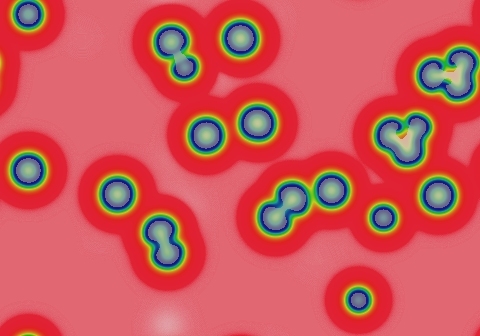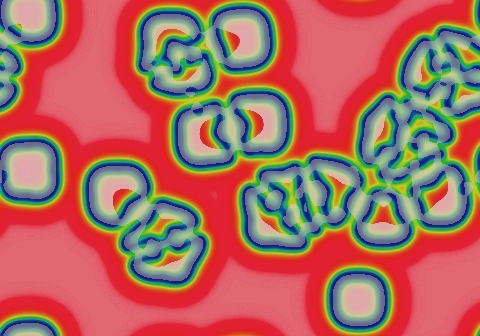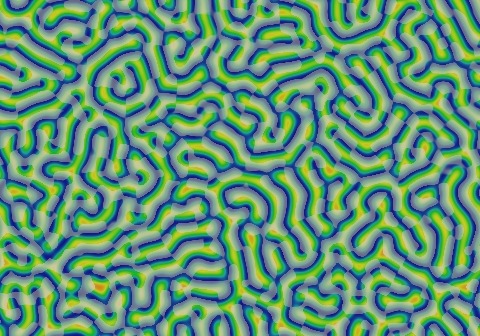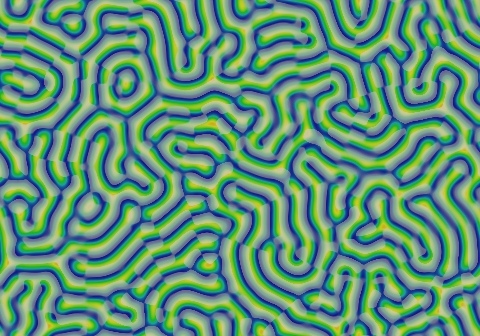Gray-Scott Model at F 0.0420, k 0.0610
These images and movie demonstrate the behavior of the Gray-Scott reaction-diffusion system with σ=Du/Dv=2 and parameters F=0.0420, k=0.0610.
Rings grow into clovers, develop more convolutions and join each other, forming a field of negative worms of all lengths, some with branching. Negative worms then link up, forming after 50,000 tu a hedgerow maze appearance, but with occasional small negative loops enclosing negatons.
The isolated loop (Benzene-ring like structure in upper left) survives unchanged for 150,000 tu, then grows a tail but remains as an island for another 200,000 tu. Meanwhile other negative solitons come and go, and similar "island loop with tail" structures arise elsewhere.
During this time the field is slowly arranging into parallel lines, with 120o angles. Pattern is still evolving after 600,000 tu. (glossary of terms)
 increase F increase F
 | |||
 decrease k  |


|
15 frames/sec.; each fr. is 74 iter. steps = 37 tu; 1800 fr. total (66,600 tu) |  increase k 
|

|


| ||
 decrease F decrease F
 |
In these images:
- Color indicates level of u, ranging from purple (lowest u values) through blue, aqua, green, yellow and pink/red (highest u values)
- Areas where u is increasing are lightened to a light pastel tone; where u is decreasing the color is vivid.
- In areas where u is changing by less than ±3×10-6 per tu, an intermediate pastel color is seen. This includes areas that are in steady state or equilibrium.
''tu'' is the dimensionless unit of time, and ''lu'' the dimensionless unit of length, implicit in the equations that define the reaction-diffusion model. The grids for these simulations use Δx=1/143 lu and Δt=1/2 tu; the system is 3.2 lu wide. The simulation meets itself at the edges (periodic boundary condition); all images tile seamlessly if used as wallpaper.
Go back to Gray-Scott pattern index
This page was written in the "embarrassingly readable" markup language RHTF, and was last updated on 2015 Nov 07.
 s.27
s.27